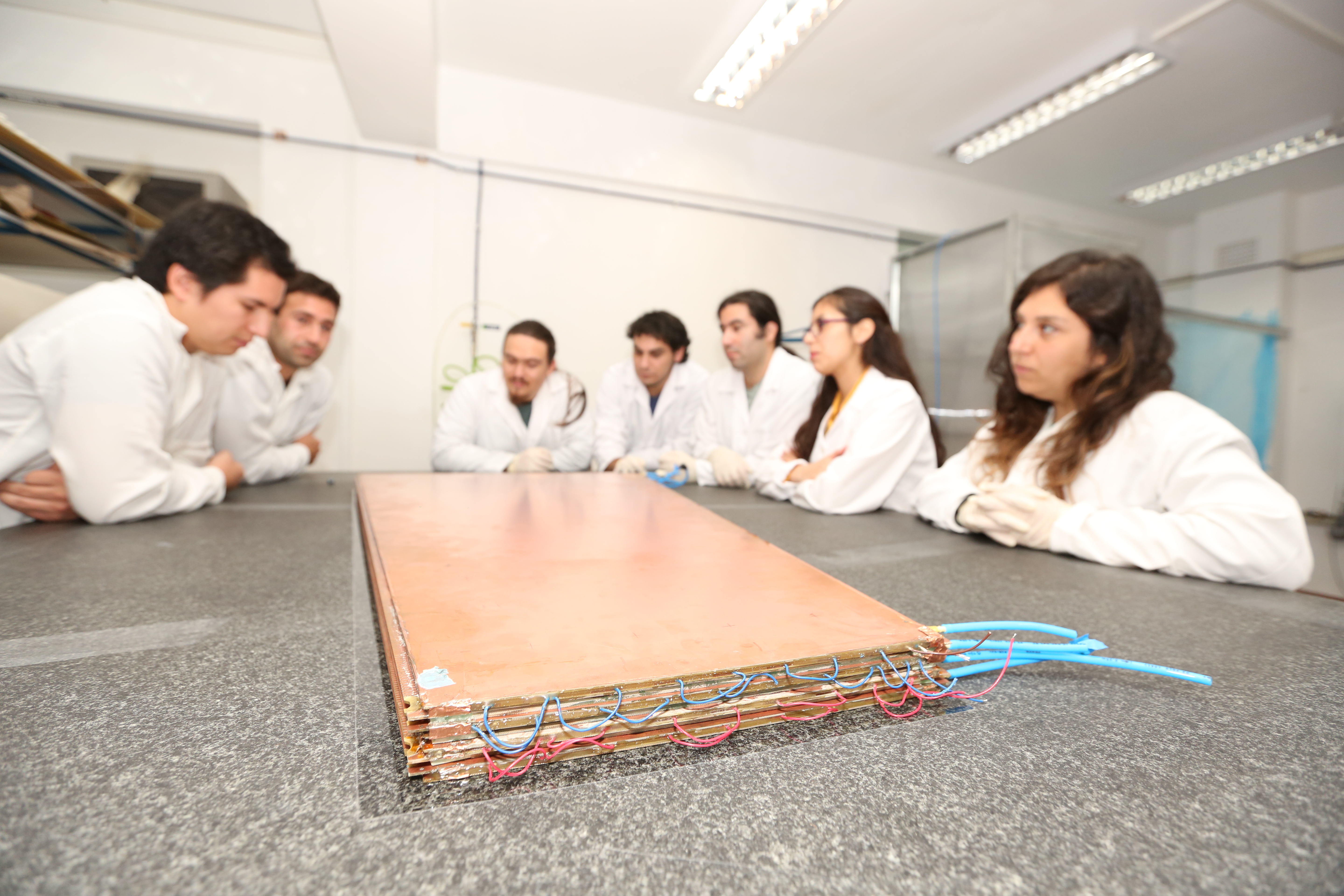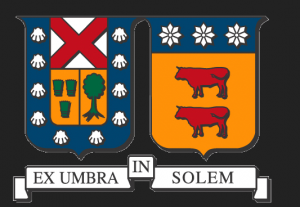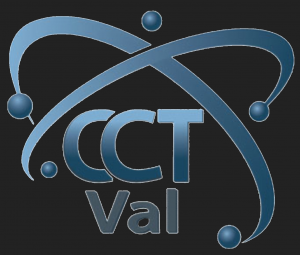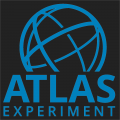Project General Information
Objective
The main objective of this project is the fundamental research related to the the physics area of the ATLAS experiment at the Large Hadron Collider (LHC), and the technological developments associated to it. This project takes advantage of an outstanding situation: on one hand, ATLAS has proven to be an exceedingly good experimental apparatus, where important scientific discoveries are achieved on a regular basis, the Higgs boson among others, has been achieved in its first 5 years of running, and now the experiment is in its upgrade phase for the next runs, where the discovery potential of new physics will increase even further; on the other hand, our scientific team, whose some our members are also of ATLAS, has established a growing particle detector laboratory at our Institution, to the level that we are now committed, for the first time in Chile, to build detector parts for the ATLAS upgrade, in collaboration with Canada, Israel and China; concurrently, our theoretical team is specialized in several of the physics issues that are studied in these experiments and is capable of providing help for our experimental colleagues, making a strong impact on the physics studies of the planned experiments. Our plan is to take advantage of the current situation and strengthen the impact of our research by forming and involving more young scientists, training science and engineering students in the high technology tasks that will be developed, and extend the capacities of our experimental facilities.
We plan to keep a close collaboration among our theoretical and experimental physicists, computer scientists and electronics engineers through research and participation in the following main areas:
- Theoretical High Energy physics: perturbative and non-‐perturbative QCD phenomena at LHC, Higgs physics, beyond the Standard Model physics.
- Experimental data analysis.
- Particle detector design, construction and testing.
- Grid computing and applications.
UTFSM, Valparaiso. Chile.
Who are we?
Members of our Ring team are also part of the Valparaíso Center for Science and Technology (CCTVal) of our University (UTFSM), which integrates High Energy Physics, Electronics and Computer Science. The center currently counts with 28 researchers and 19 junior and postdoctoral researchers, for a total of 47 PhDs, where nearly 150 students of all levels have already participated. Because of this, our project members group will benefit from the resources and environment provided by CCTVal, namely its detector laboratory; its wide international collaboration with CERN, Jefferson Lab, Fermilab, Brookhaven Natl. Lab, and several universities in the US and Europe; its team of trained technicians; and its ATLAS Grid Computing Cluster, which was the first one to reach “Tier-‐2” qualification in South America. Conversely, this project will strengthen the activities of CCTVal concerning the physics of the 14-‐TeV high luminosity future runs of the LHC and the current commitment of Chile for the Muon System Upgrade of the ATLAS detector.
This upgrade for the ATLAS detector is a key stage of its preparation for the data acquisition during the forthcoming 14 TeV high luminosity LHC phase, when new breakthrough scientific discoveries are expected to happen. The Chilean ATLAS team (formed by scientists at UTFSM and PUC) was accepted by the ATLAS Collaboration to participate in the ATLAS Muon system upgrade, where Chile will produce and test 15% of new muon system of ATLAS.
This project is funded by CONICYT and by the Program of Associated Investigation through the Instrument: Rings of Investigation in Science and Technology (‘Programa de Investigación Asociada a través del instrumento Anillos de Investigación en Ciencia y Tecnología’). CONICYT has signed an agreement with ATLAS and will finance the production of the sTGC (detector components), it will be done in collaboration by the two universities in a specialized laboratory (sTGC production facility), currently under construction at UTFSM.
Small Thin Gap Chamber Fabrication Team
Experience
Our area of research has proven to be highly successful at bringing a close collaboration between science and engineering. In fact, never before our University has had so many engineering students participating in our scientific studies and in our research laboratories. Some of them have also converted to physics and are pursuing Ph.D. degrees at renowned universities (Caltech, Cambridge, etc.). Others have profited from the high tech training in our lab tasks. We expect this project to further stimulate these opportunities for our students.
Some of our past achievements:
- Large number of publications in Theoretical and Experimental Particle Physics per year, in journals of high impact. Our theoretical areas have emphasis on the phenomenology of particle experiments, in most of the subjects of interest: perturbative QCD, hadron physics, proton and heavy ion collisions, neutrino physics, Higgs physics, and physics beyond the Standard Model. Our experimental areas are about the physics of hadron colliders, electron-‐hadron, e+e-‐ and neutrino-‐hadron collisions.
- Participation in Trigger and data analysis within the ATLAS collaboration, including a leading role in the heavy ion collision runs.
- Participation in the design and test with beams of thin gap chambers (sTGC) for the ATLAS muon system upgrade.
- Setting up of a Particle Detector Laboratory in our University, first of its kind in Chile, where three major tasks for experiments in the US national labs have recently been completed:
- Full test and characterizing of 2800 Multi-‐Photon Pixel Counters (MPPC), consisting in 50,000 electronics channels.
- Fabrication of 4000 UV-‐transmitting optical lightguides of high-‐precision irregular geometries, requiring a recently acquired 5-‐axis CNC milling machine.
- Fabrication of a 625-‐element preshower calorimeter detector for Brookhaven Natl. Lab., tested at UTFSM using cosmic muons, later to be beam-‐tested at CERN.
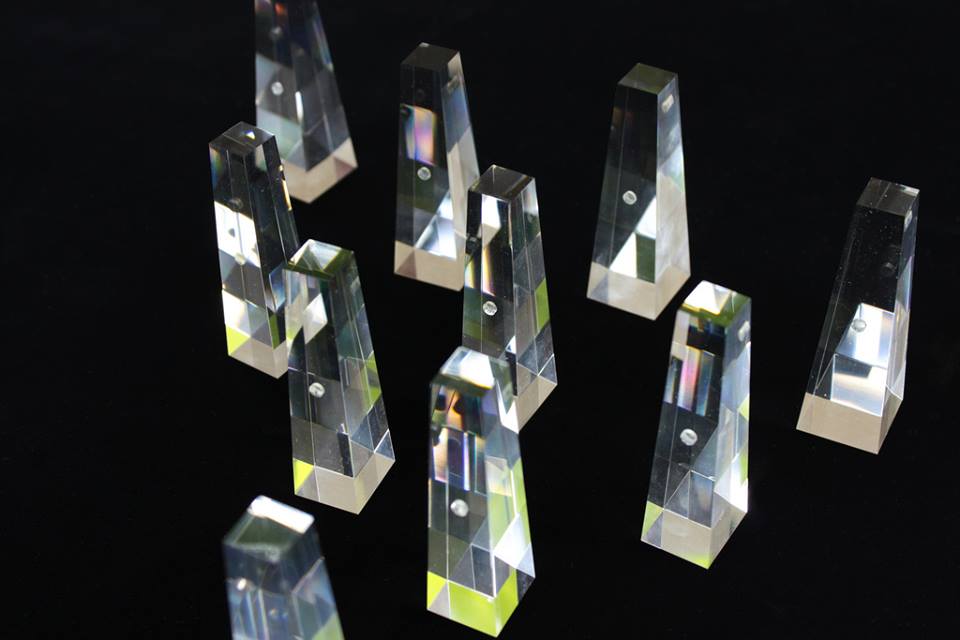
Lightguides fabricated at our Lab
- In the last 6 years, more than 140 science and engineering students have already been involved in the different tasks at our laboratory.
CERN Commission site review 2016
Expected Impact
The main expected impacts of our project are:
- Provide a contribution to the fundamental knowledge of High Energy Physics, both theoretical and experimental.
- Provide advanced training for scientists and engineers in frontier science and technology issues such as Big Data analysis, trigger and data acquisition systems, detector design, hardware construction and software.
- Strengthen our capacity to respond to the ATLAS upgrade commitment of Chile and to develop further capacity for Chile to undertake future commitments in physics research and related technologies.
Fabrication of First sTGC Module
CERN Activities 2017
Fabiola Gianotti, CERN’s Directors General, has made an anual report about the most important activities that took place at CERN during 2017. In this report it is shown that ATLAS/LHC is considered a flagship of CERN and NA-64 is recognized as an important project. The full reporte can be found here.






